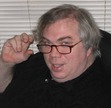Writing a Novel
A member of my writing group recently put out a request for those of us who have written novels to talk about our composition process and experiences. As preparation for that upcoming discussion — recognizing that I’m still discovering what worked and didn’t work in my one successful and other not-yet-successful novel-writing efforts — here are some top-level thoughts.
#######
Story ideas, for me, start with a character, a situation, and a setting. It might, for example, be a wizard, a couple hundred years old, shadowy ruler in a country considered backward and oppressive by its neighbors, who suppresses the magical talents of his citizenry by rituals he enforces on them to prevent any rivals from arising. His background might be that of a lesser talent from the peers of his own time period, who has nonetheless outlasted them all through careful husbanding of his power and avoiding the limelight.
This, by the way, is one of several ideas I’ve been thinking about off and on for quite a while, but have yet to develop into anything that feels ready to start turning into a story. In this connection, you may notice the lack of a plot, or even a central conflict. One of my great problems as a story writer is developing a clear idea of what actually happens.
From my experience, there’s no real point in trying to move on with a story in any formal way (drafting, outlining, etc.) without at least the following:
A sense of the character’s starting point
A sense of where the character is at the end of the story
A top-level sense of the basic change(s) the character undergoes from the beginning to the end of the story
Some touchpoints along the way: key incidents, intermediate conflicts, etc. These aren’t by any means final or complete, but give a starting-point for thinking about what the substance of the story might be.
Until I reach this point, what I have isn’t really a story idea, but something more primitive.
#######
Even after this point, there’s still a lot more to do before I’m ready to start writing, mostly detail/background work: developing the setting, developing the character, generating more interesting incidents. A lot will change during the writing, but I’ve found that I need a pretty full bag of existing ideas before I start drafting, or my writing will wander all over the place.
Primary tools for these initial phases are brainstorming, note-taking, open-ended research, and multiple points of attack over an extended period of time — taking care not to push beyond an inwardly sensed point where I’m no longer letting things fall together, but rather pushing things forward artificially. Cautious mental probing, like Gimli’s description to Legolas about opening up new caves for exploration: “with cautious skill, tap by tap—a small chip of rock and no more perhaps, in a whole anxious day.” Kneading the mental bread dough, adding a little flour, letting it rest, over and over until it has the right feel.
#######
And then there’s the drafting.
The actual course of composition, for me, is messy. With No Going Back, I started at the beginning and wrote until the end — but also jumped ahead on multiple occasions to write a scene I had just envisioned, or that I knew would be happening and wanted to nail down.
This worked surprisingly well. It gave me something to work on when the main line of my writing was stuck, and helped me figure out where the story was going. Some adjustments had to be made when it was time to fit these scenes into their places within the main narrative, but less than I had feared.
I didn’t do formal detailed outlining. However, I spent a lot of time thinking about the larger plot lines and how they fit together. One of the things I’ve found is that I seem to have trouble writing a single narrative line and making it feel like it’s going somewhere. My solution (to the extent that I have one) is to weave together multiple plot lines with separate characters and conflicts, and use that structure to help generate a sense of energy and forward motion. That requires a lot of thought to make sure each separate thread flows naturally and that they all fit together the way I want them to. Timelines, for me, seem to be more essential than outlines.
Another thing I’ve found about myself is that I can’t do what some people suggest: that is, writing something I know is garbage with the intention of fixing it during the editing. Which isn’t to say that a lot of my writing isn’t garbage, and that a lot of revision doesn’t have to happen during the editing. But writing something that isn’t as good as I can make it at the time poisons the whole process. This is where allowing myself to work on other scenes is so valuable, since it lets me keep drafting while I’m figuring stuff out.
#######
Boiling it all down:
Develop an overall story plan.
Put the pieces together over time.
Incorporate multiple story threads.
Plan in advance (but no outlining per se).
Write from beginning to end, but skip ahead to write other scenes.
Draft as well as I know how, but plan to revise.
Don’t push things.
Put in time consistently (my most frequent failing).
So far, that’s what seems to work for me.



